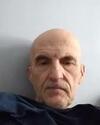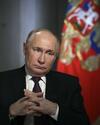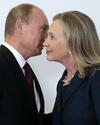Mikhail Kryzhanovsky. "Putin and his crimes.Case #18. KGB: terror and anti-terror"
Очерк / ПолитикаАннотация отсутствует
Объем: 0.715 а.л.
Mikhail Kryzhanovsky, the author of the White House Special Handbook, Espionage and Counterespionage Handbook, a former KGB spy and CIA expert
kryzhanovsky7777@gmail. com
New York
Donate to make the documentary "PUTIN AND HIS CRIMES".
You can join me and help to remove Russian dictator Putin from the power. And send to hail his KGB assets in USA.
Read all episodes and make a decision.
Thank you.
Mykhaylo (Mikhail) Kryzhanovsky
LIST OF EPISODES
Putin and his crimes.
1. Mikhail Kryzhanovsky. "Putin and his crimes: Case #1: Illegal President".
https://yapishu. net/book/294469
2. Mikhail Kryzhanovsky. " Putin and his crimes. Case #2. 9/11 attack".
https://yapishu. net/book/294390
3. Mikhail Kryzhanovsky. "Putin and his crimes. Case #3: Hillary-2016 removed".
https://yapishu. net/book/294470
4. Mikhail Kryzhanovsky. "Putin and his crimes. Case #4: COVID-19".
https://yapishu. net/book/294472
5. Mikhail Kryzhanovsky. "Putin and his crimes. Case #5: Attack on the Capitol"
https://yapishu. net/book/294582
6. Mikhail Kryzhanovsky. "Putin and his crimes. Case #6 :Hillary to be dead"
https://yapishu. net/book/294583
7. Mikhail Kryzhanovsky. "Putin and his crimes. Case #7: Obama to be removed".
https://yapishu. net/book/294584
8. Mikhail Kryzhanovsky. "Putin and his crimes. Case #8: Putin ordered Trump to erase me"
https://yapishu. net/book/29458
9. Mikhail Kryzhanovsky. "Putin and his crimes. Case #9. KGB Instructions for 2016 Trump election".
https://yapishu. net/book/294704
10. Mikhail Kryzhanovsky. «Putin crimes. "Case #10. "KGB instructions :How to manage the White House".
https://yapishu. net/book/29480
11. Mikhail Kryzhanovsky. «Putin and his crimes. "Case #11. "Flynn, Führer of pro-Trump military coup.
https://yapishu. net/book/294810
12. Mikhail Kryzhanovsky. «Putin and his crimes. Case #12. "KGB The Boomerang Operation".
https://yapishu. net/book/294815
13. Mikhail Kryzhanovsky. "Putin and his crimes. Case # 13. Golden ruble kills $"
https://yapishu. net/book/296107
14. Mikhail Kryzhanovsky. "Putin and his crimes". Case #14. "KGB Espionage: Special Operations. "
https://yapishu. net/book/297288
15. Mikhail Kryzhanovsky. "Putin and his crimes. Case #15. "KGB : tortures and murders".
https://yapishu. net/book/297290
16. Mikhail Kryzhanovsky. "Putin and his crimes. Case #16. "KGB illegal spies. "
https://yapishu. net/book/297291
17. Mikhail Kryzhanovsky. Putin and his crimes. Case #17. "KGB Counterespionage".
https://yapishu. net/book/297293
18. Mikhail Kryzhanovsky. "Putin and his crimes. Case #18. KGB: terror and anti-terror".
https://yapishu. net/book/297405
19. Mikhail Kryzhanovsky. "Putin and his crimes. Case #19. KGB: sniper. "
https://yapishu. net/book/297407
20. Mikhail Kryzhanovsky. "Putin and his crimes. Case #20. KGB: special forces".
https://yapishu. net/book/297410
21. Mikhail Kryzhanovsky. "Putin and his crimes. Case #21. KGB: secret assets".
https://yapishu. net/book/297411
22. Mikhail Kryzhanovsky. "Putin and KGB crimes. Case # 22. John & Robert Kennedy, Marilyn, Diana".
https://yapishu. net/book/295875
23. Mikhail Kryzhanovsky. "Putin and his crimes. Case #23. KGB dossier on KGB Trump. "
https://yapishu. net/book/294729
24. Mikhail Kryzhanovsky. "Putin and his crimes. Case #24. Movie script "The Boomerang Operation".
https://yapishu. net/book/297528
25. "Putin and his crimes. Case #25. KGB ESPIONAGE HANDBOOK. Mikhail Kryzhanovsky.
https://yapishu. net/book/147927
26. "Putin and his crimes. Case #26. "KGB technology: Riot, Coup, Guerrilla, Terror". Mikhail Kryzhanovsky.
https://yapishu. net/book/298187
27. Putin and his crimes. Case #27. "Putin/Trump secret Helsinki talk". Full script. Mikhail Kryzhanovsky
https://yapishu. net/book/298191
28. Putin and his crimes. Case #28. "KGB Kushner and KGB Trump". Mikhail Kryzhanovsky.
https://yapishu. net/book/298307
29. Putin and his crimes. Case #29. "How KGB Trump and Ivanka support terrorists. " Mikhail Kryzhanovsky.
https://yapishu. net/book/298430
30. Putin and his crimes. Case #30. "Snowden Operation. Mikhail Kryzhanovsky.
https://yapishu. net/book/57168
31. "Putin and his crimes. Case #31. "Deputy mayor Putin: corruption". Mikhail Kryzhanovsky
https://yapishu. net/book/298433
32. "Putin and his crimes. Case #32. KGB : How to Control the U. S. Congress. " Mikhail Kryzhanovsky.
https://yapishu. net/book/298769
33. "Putin and his crimes. Case #33. KGB: How to manage the U. S. Congress". Mikhail Kryzhanovsky.
https://yapishu. net/book/298771
34. "Putin and his crimes. Case #34. "KGB: U'S. Foreign policy and Diplomacy". Mikhail Kryzhanovsky.
https://yapishu. net/book/298772
35. "Putin and his crimes. Case #35. KGB: The Oval Office management". Mikhail Kryzhanovsky.
https://yapishu. net/book/298777
36. Putin and his crimes. Case #36. KGB : espionage and U. S. politics. VIDEO. Mikhail Kryzhanovsky.
https://yapishu. net/book/297755
37. Putin and his crimes. Case #37. "How to catch American spy. Mikhail Kryzhanovsky.
https://yapishu. net/book/298873
38. Putin and his crimes. Case #38. 35 episodes, full dossier. Mikhail Kryzhanovsky.
https://yapishu. net/book/298434
39. Putin and his crimes. Case #39. "Spy Code for KGB Putin". Mikhail Kryzhanovsky.
https://yapishu. net/book/299113
40. Putin and his crimes. Case #40. "How to recruit and work with assets in USA". Mikhail Kryzhanovsky.
https://yapishu. net/book/299114
41. Putin and his crimes. Case #41. "KGB surveillance". Mikhail Kryzhanovsky.
https://yapishu. net/book/299115
42. Putin crimes. Case #42. "KGB : guerrilla". Mikhail Kryzhanovsky.
https://yapishu. net/book/299116
43. Putin and his crimes. Case # 43. "Black socialism in US". Mikhail Kryzhanovsky.
https://yapishu. net/book/299360
44. Putin and his crimes. Case #44. "KGB asset Trump is mafia associate". Mikhail Kryzhanovsky.
https://yapishu. net/book/299750
45. Putin and his crimes. Case #45. "How Putin recruited Trump and How Trump kills America". Mikhail Kryzhanovsky.
https://yapishu. net/book/299764
46. Putin and his crimes. Case #46. "Who work for Putin/Trump in USA? " Mikhail Kryzhanovsky.
https://yapishu. net/book/299864
47. Putin and his crimes. Case #47. "Trump, August, 2021 coup, Dossier. STOP HIM! "
https://yapishu. net/book/299875
48. Putin and his crimes. Case #48. TRUMP IS KGB. Full Dossier. Mikhail Kryzhanovsky.
https://yapishu. net/book/300112
49. Putin and his crimes. Case #49. "How to identify Trump as Russian "mole". Mikhail Kryzhanovsky.
https://yapishu. net/book/300115
50. Putin and his crimes. Case #50. "How KGB works with asset Trump". Mikhail Kryzhanovsky.
https://yapishu. net/book/300120
51. Putin & his crimes. Case #51"The Taliban" and "The Domino Principle" Operations :Taliban loves Putin, Putin loves Taliban. Mikhail Kryzhanovsky.
https://yapishu. net/book/301050
52. Putin and his crimes. Case #52. "Controlled Chaos or New Putin's World Order". Mikhail Kryzhanovsky.
https://yapishu. net/book/300950
53. Putin and his crimes. Case #53. "Afghanistan" Op: Putin-Xi Jingpin-Taliban-ISIS -Trump. Mikhail Kryzhanovsky.
https://yapishu. net/book/301912
54. Putin and his crimes. Case #54. Putin ready for WWIII. Mikhail Kryzhanovsky
https://yapishu. net/book/302070
55. Putin and his crimes. Case #55. Putin ready to assassinate Biden to put Trump back in the Oval Office. Mikhail Kryzhanovsky
https://yapishu. net/book/302069
56. Putin and his crimes. Case # 56. Stop Putin's "Afghanistan" Op : my instructions on anti-terror, war, espionage and special ops. Mikhail Kryzhanovsky
57. Putin and his crimes. Case # 57. "The Boomerang" Op. Trump: how KGB turned him into asset" (script). Mikhail Kryzhanovsky.
58. Putin and his crimes. Case # 58. Putin turned Trump into a shadow president.
https://yapishu. net/book/303480
Organized terror is “organized construction”:
–search and recruitment of people (active and passive supporters), including informants and supporters in government agencies, counterintelligence and police
–getting money (robberies, illegal operations with drugs and weapons, legal business, searching for donors with the same political views)
–security system, including a system of “cells” or small groups (some groups may organize multifunctional cells that combine several skills into one tactical unit). Preparing places where members can hide, relax, get medical care; keep weapons, money, special literature. System also includes fake IDs and counter-intelligence (detection of traitors, preventing collapse of the group and uncontrolled criminal activity (robberies)
–training camps (shooting, working with explosives). If the group is state supported or directed, the leadership usually includes one or more members who have been trained and educated by the sponsoring state
–“brainwashing” sessions (the group may include professional terrorists for hire who are not necessarily ideologically motivated)
–planning the actions
–making special connections with other groups and mafia
The typical terrorist organization is pyramidal. This format takes more people to support operations than to carry them out. Therefore, the majority of people who work in terrorist organizations serve to keep terrorists in the field. The most common job in terrorist groups is support, not combat.
Usually, organization is divided into 4 levels:
1st level. Command level. The smallest, most secret group at the top.
2nd level. Active cadre. Responsible for carrying out the mission of the terrorist organization..
3rd level. Active supporters. The active supporters are critical to terrorist operations. Any group can carry out a bombing, but to maintain a campaign of bombings takes support. Active supporters keep the terrorists in the field. They maintain communication channels, provide safe houses, gather intelligence. This is the largest internal group in the organization, and one which can be effectively countered by economic measures.
4th level. Passive supporters. Most terrorist groups number fewer than 50 people and are incapable of mounting a long-term campaign. Under the command of only a few people, the group is divided according to specific tasks. Intelligence sections are responsible for assessing targets and planning operations. Support sections provides the means necessary to carry out the assault, and the tactical units are responsible for the actual terrorist action.
Terrorist organizations tend to have two primary types of subunits: a cell and a column.
The cell is the most basic type. Composed of 4 to 6 people, the cell usually has a mission specialty, but it my be a tactical cell or an intelligence section. In some organizations, the duties of tactical cells very with the assignment. Other cells may exist as support wing.
Sometimes groups of cells will form to create columns. Columns are semiautonomous conglomerations of cells with a variety of specialties and a separate command structure. As combat units, columns have questionable effectiveness. They are usually too cumbersome to be used in major operations, and the secrecy demanded by terrorism prevents effective inter-column cooperation. Hence, columns are most often found fulfilling a function of combat support.
Terrorist groups can be divided into three categories:
a. non-state supported groups which operate autonomously, receiving no support from any government
b. state supported groups, which operate alone but receive support from one or more governments
c. state directed groups, which operate as the agents of a government, receiving substantial intelligence, logistic, and operational support
Methods
Hostage-taking.
An overt seizure of one or more people to gain publicity, concessions, or ransom in return for the release of the hostage or hostages. While dramatic, hostage situations are risky for the terrorist in an unfriendly environment..
You must always negotiate if hostages have been taken. Negotiation produces some advantages for you. These advantages are: (a) the longer situation is prolonged, the more intelligence can be gathered on the location, motivation and identity, (b) the passage of time generally reduces anxiety, allowing the hostage taker to assess the situation rationally, (c) given enough time, the hostages may find a way to escape on their own, (c) the necessary resolve to kill or hold hostages lessens with timer, (d) terrorists may make mistakes. The negotiation team must have information to support negotiations (you get it from interviews with witnesses, escaped and released hostages, and captured suspects — it’s very important to get the identities, personalities, motives, habits and abilities of the offenders).
One of the complications facing you in a siege involving hostages is the Stockholm syndrome where sometimes hostages can develop a sympathetic rapport with their captors. If this helps keep them safe from harm, this is considered to be a good thing, but there have been cases where hostages have tried to shield the captors during an assault or refused to co- operate with the authorities in bringing prosecutions. (In Britain if the siege involves perpetrators who are considered by the government to be terrorists, then if an assault is to take place, the civilian authorities hand command and control over to military).
Bombing.
Advantage includes it’s attention-getting capacity and the terrorist’s ability to control casualties through time of detonation and placement of the device. The bomb is a popular weapon, because it is cheap to produce, easy to make, has variable uses, and is difficult to detect and trace after the action. In Iraq they usually use booby-trapped vehicles and car- bombs. A car bomb is an explosive device placed in a car or other vehicle and then exploded. It is commonly used as a weapon of assassination, terrorism or guerrilla warfare to kill the occupant(s) of the vehicle, people near the blast site, or to damage buildings or other property. Car bombs act as their own delivery mechanisms and can carry a relatively large amount of explosives without attracting suspicion. The earliest car bombs were intended for assassination. These were often wired to the car’s ignition system – to explode when the car was started. Ignition triggering is now rare, as it is easy to detect and hard to install – interfering with the circuitry is time-consuming and car alarms can be triggered by drains on the car’s electrical system. Also, the target may start the car remotely (inadvertently or otherwise), or the target may be a passenger a safe distance away when the car starts. It is now more common for assassination bombs to be affixed to the underside of the car and then detonated remotely or by the car motion. The bomb is exploded as the target approaches or starts the vehicle or, more commonly, after the vehicle begins to move, when the target is more likely to be inside. For this reason, security guards have to check the underside of vehicles with a long mirror mounted on a pole.
The effectiveness of a car bomb is that an explosion detonated inside a car is momentarily contained. If the force of explosion were to double each fraction of a second and the car were to contain the explosion for one second before its chassis gave way, this would result in a much greater force then if the detonation took place outside the car. Therefore a greater amount of damage is obtained from a given amount of explosive. Car bombs are also used by suicide bombers who seek to ram the car into a building and simultaneously detonate it. Defending against a car bomb involves keeping vehicles at a distance from vulnerable targets by using Jersey barriers, concrete blocks or by hardening buildings to withstand an explosion. Where major public roads pass near government buildings, road closures may be the only option (thus, the portion of Pennsylvania Avenue immediately behind the White house is closed to traffic. These tactics encourage potential bombers to target unprotected targets, such as markets.
Suicide attack.
A major reason for the popularity of suicide attacks is tactical advantages over other types of terrorism. A terrorist can conceal weapons, make last-minute adjustments, infiltrate heavily guarded targets and he does not need a remote or delayed detonation, escape plans or rescue teams. Suicide attacks often target poorly- guarded, non-military facilities and personnel. Examples of different suicide attacks include:
–attempted suicide attack with a plane as target
–suicide car bomb
–suicide attack by a boat with explosives
–suicide attack by a woman
–suicide attack by a bicycle with explosives
–suicide attack by a hijacked plane with fuel: September 11, 2001 attacks
–suicide attack by diverting a bus to an abyss
–suicide attack with guns
Ambush
A well-planned ambush seldom fails. The terrorists have time on their side, and can choose a suitable place. Raid (armed attack) on facilities usually have one of three purposes: to gain access to radio or TV stations (to make a public statement); to demonstrate the government’s inability to guarantee the security of critical facilities; or to acquire money and weapons ( by bank pr armory robberies).
Assassination
Assassination is the oldest terrorist tactic. Targets mostly are government officials, as well as the defectors from the terrorist group.
Kidnapping
Kidnapping is usually a covert action and the perpetrators may not make themselves known for some time, while hostage
–takers seek immediate publicity. Because of the time involved, a successful kidnapping requires elaborate planning and logistics, although the risk to the terrorists is less than in a hostage situation.
Sabotage
Its objective is to demonstrate how vulnerable society is to the terrorists’ actions on utilities, communications and transportation systems. In the more developed countries they are so interdependent that a serious disruption of one affects all and gains immediate public attention. Sabotage of industrial, commercial or military facilities is a tool to show vulnerability of the target and the society while simultaneously making a statement or political, or monetary demand.
Hoaxes
A threat against a person’s life causes him and those around him to devote more time and effort to security measures.. A bomb threat can close down a commercial building, empty a theater, or disrupt a transportation system at no cost to the terrorist. The longer-term effects of false alarms on the security forces are more dangerous than the temporary disruption of the hoax. Repeated threats that do not materialize dull the analytical and operational effectiveness of security personnel.
Counter-terrorism
Homegrown terrorists
Homegrown terrorists are not easy targets, especially if you deal with a "lonely wolf" (individual) or a separate small group of 2-3 people. They are not connected to any terrorist groups, organizations, radical parties, mafia.
That's why you have to:
1. Recruit assets among illegal weapons dealers, they have to inform you about anybody, trying to buy a gun and a lot of ammunition, automatic weapons, explosives.
2. The assets have to inform you about any person with radical views and ready for radical action (to blackmail the government and make it change it's policy).
NSA has to fix all phone calls where you hear key words like "kill", "gun", "explosive", "explosion", "FBI", "surveillance", "kidnapping", "sniper", "torture", etc.
3. Detect people who search Internet, looking for instructions on "home made" explosives.
4. Watch terrorists in jail – they might keep contacts with with those outside. Watch terrorists who are out of jail.
5. Keep under control all shooting ranges in the country and people who try to get training as snipers.
6. ATTENTION: keep under control scientists who work with explosives. And companies which produce weapons, explosives, and sell them.
7. Watch army veterans with radical views, pay special attention to those who served in special forces and involved in war zones special operations.
Responses to terrorism include:
–targeted laws, criminal procedures, deportations and enhanced police powers
– target hardening, such as locking doors or adding traffic barriers
–pre-emptive or reactive military action
–increased intelligence and surveillance activities
–pre-emptive humanitarian activities
–more permissive interrogation and detention policies
–official acceptance of torture as a valid tool
You must gather the following information:
1. Group information.
Names, ideology (political or social philosophy), history of the group, dates significant to the group, and dates when former leaders have been killed or imprisoned (terrorist groups often strike on important anniversary dates).
2. Financial information.
Source of funds, proceeds from criminal activities, bank accounts information (sudden influxes of funding or bank withdrawals indicate preparation for activity). It’s also important to determine the group’s legal and financial supporters. Generally, anyone who would write an official letter of protest or gather names on a petition for a terrorist is a legal supporter. Sometimes, an analysis of support will reveal linkages and mergers with other groups.
3. Personnel information.
List of leaders, list of members (and former members), any personnel connections with other groups of similar ideology. The skills of all group members (weapons expertise, electronics expertise) – knowing the skills of the group is an important part of threat assessment. If the philosophy revolves around one leader, it’s important to know what will occur if something happens to that leader. Often, the analysis of family background is useful to determine how radically a leader or member was raised. Group structure, particularly if the organizational pattern is cellular, determines who knows whom.
As a group, terrorists are very team-oriented and always prepared for suicide missions. They are well-prepared for their mission, are willing to take risks and are attack-oriented. If captured, they will usually not confess or snitch on others as ordinary criminals do. Traditional law enforcement are not that effective when it comes to the investigation or intelligence of terrorism.
4. Location information.
Location of group’s headquarters, location of group’s “safe” houses (where they hide from authorities) and location of the group’s “stash” houses (where they hide weapons and supplies). Regular attacks on “stash” houses is the most frequently used counterterrorism technique). It’ important to specify the underground that exists where terrorists can flee. Terrorists like to live in communal homes instead of living alone.
Remember this:
1. Knowing just the functions of terrorism is a fight. Since terrorists are usually trying to provoke government’s overreaction, anything the government can do to keep itself from overreacting works against them.
2. Since terrorists are usually trying to provoke government’s overreaction, anything the government can do to keep itself from overreacting works against them. Since terrorists are trying to gain control of the media, anything on the part of the media which stifles exposure also stiles terrorism. Bombings make the best pictures (watch TV! ), that’s why terrorists use them mostly.
3. Terrorists often demand to release political prisoners, but this is never a true objective. The real trick is politization of all prisoners, the winning over of new recruits among the prison population.
4. Go after financial supporters of terrorism, not the terrorists themselves. It’s only with narcoterrorism that this strategy fails, since the drug market doesn’t respond to simple supply-demand forces.
5. Terrorists are imitators, not innovators. They often wait until some other group makes the first move. Most of them do this because they are sorely trying to imitate military strategy, others do it because of standardized paramilitary training or textbook lessons in guerrilla tactics, and still others do it to throw off suspicion from themselves..
6. The Stockholm Syndrome works in the favor of anti-terrorist forces. The longer the hostages stay alive, the less likelihood harm will come to them. With this syndrome, the hostages come to think of their captors as protecting them from the police and soon start to identify with their captors. The captors themselves start to develop a parent/child relationship with their hostages. Other syndromes include the Penelope Syndrome, where women find violent criminals sexually attractive.
7. In assessing the threat of terrorism, it’s important to concentrate on counting the number of incidents, not the number of victims or the value of harm. The only true comparison is the number of attacks since terrorists often have no idea themselves about how many victims will be killed by their actions. Nationalist groups tend to seek a high number of fatalities while revolutionary groups tend to seek fewer deaths and more wounds or injuries. Splinter or spin-off groups seem more interested in death counts and fatalities. The point is that no matter how many victims are targeted, the group is only a threat via its number of attacks as a percent of totalactivity.
8. Do count the number of victims saved by any preventive action. If you manage through some leverage to get the terrorist leader to stop things with a cease-fire agreement, regardless of whether further negotiation follows or not, it will help your agency if you have calculated how many lives you’ve saved, and can report this information to policymakers. Everyone wins by a cease-fire – the terrorist leaders look good, your leaders look good too. After the cease-fire, it’s important to also measure the resumed level of violence and compare to pre-cease-firelevels.
9. Giving into terrorists’ demands for political change only changes the pattern of violence, not violence itself. Economic and political reforms aimed at helping a certain group and resolving its grievances will win over some supporters among the general population, but in the long-run, will create new problems and a new set of grievances over the precise implementation of policy and the degree of power sharing. A much better strategy is to initiate economic and political reforms for all nation. Economic development solutions have worked in Ireland, Uruguay and Italy.
10. Reduction of recruits, supplies and support. You have to reduce the number of active trainee members of the terrorist organization. Capture and imprisonment works (it has helped to keep Spain fairly terrorism-free), as well as preemptive strikes against training camps. The number of terrorists captured or killed should be counted, and this can be put as the denominator in a fraction with the number of government security forces killed in the numerator. You’ve also got to keep weapons, ammo and supplies out of hands of terrorists by destruction of their “stash” houses. Unfortunately, many religious terrorist groups operate under the cover of religion and blowing up religious buildings has a strong negative effect.
11. Terrorism does not respond to coalition-based sanctions which are intended to express the international community’s disregard for them. Terrorist actually want their enemies to wage a war on terrorism because this gives them some pseudo-legitimacy that they are soldiers-at war. If they are broken up from receiving any psychological rewards or sympathy from their social support groups, this strategy might work.
12. Sharing of information and intelligence by counter-terrorism agents is essential. But there’s always a threat, that a secret source might be “burnt out” during such “sharing”.
13. Terrorist groups with a cell structure are most likely to thwart human intelligence since the purpose of the cell structure is to prevent any members from knowing who is the immediate leader. This may or may not be true with some groups (like the IRA) which mix family with business, depending upon levels of fidelity. The best approach for such groups may electronic surveillance. However, groups with military or paramilitary organization might be easier to infiltrate or penetrate.
Комментарии
Книги автора
Автор: Kryzhanovsky
Монография / Детектив Документация История Мемуар Политика Приключения
Аннотация отсутствует
Объем: 4.903 а.л.
21:50 25.04.2024 | оценок нет
Автор: Kryzhanovsky
Монография / Политика
Аннотация отсутствует
Объем: 7.336 а.л.
19:40 20.04.2024 | оценок нет
Автор: Kryzhanovsky
Статья / Политика
Аннотация отсутствует
Объем: 0.065 а.л.
22:06 16.04.2024 | оценок нет
Автор: Kryzhanovsky
Монография / Детектив Политика
Аннотация отсутствует
Объем: 11.376 а.л.
00:02 13.04.2024 | оценок нет
Автор: Kryzhanovsky
Очерк / Политика
Аннотация отсутствует
Объем: 0.171 а.л.
22:24 11.04.2024 | оценок нет
Автор: Kryzhanovsky
Очерк / Политика
Аннотация отсутствует
Объем: 0.168 а.л.
22:21 11.04.2024 | оценок нет
Автор: Kryzhanovsky
Монография / Детектив История Мемуар Политика Приключения Психология
Аннотация отсутствует
Объем: 21.247 а.л.
23:28 26.12.2023 | оценок нет






